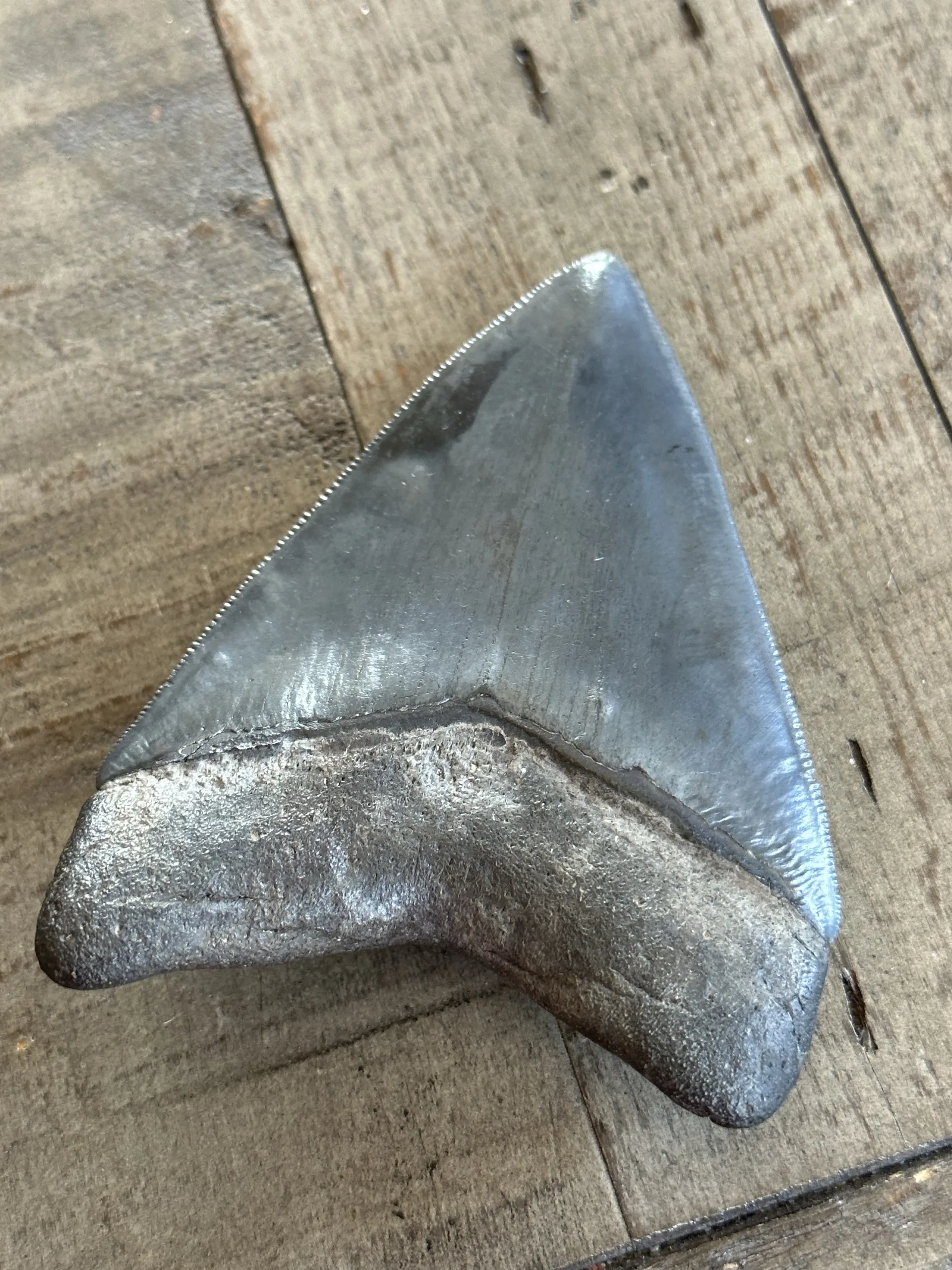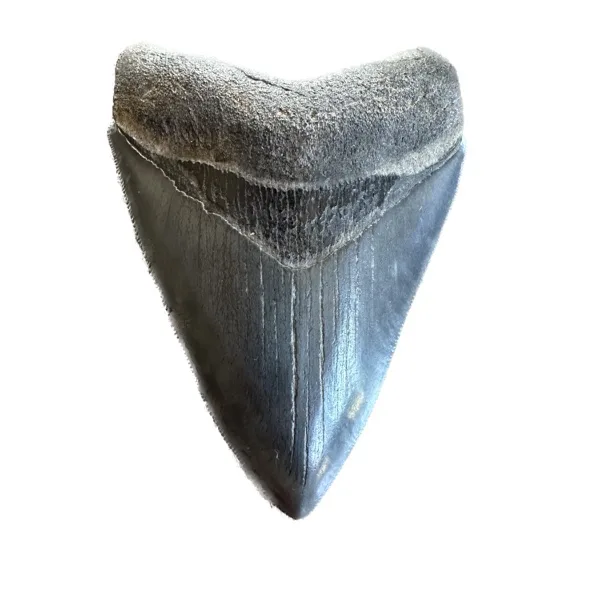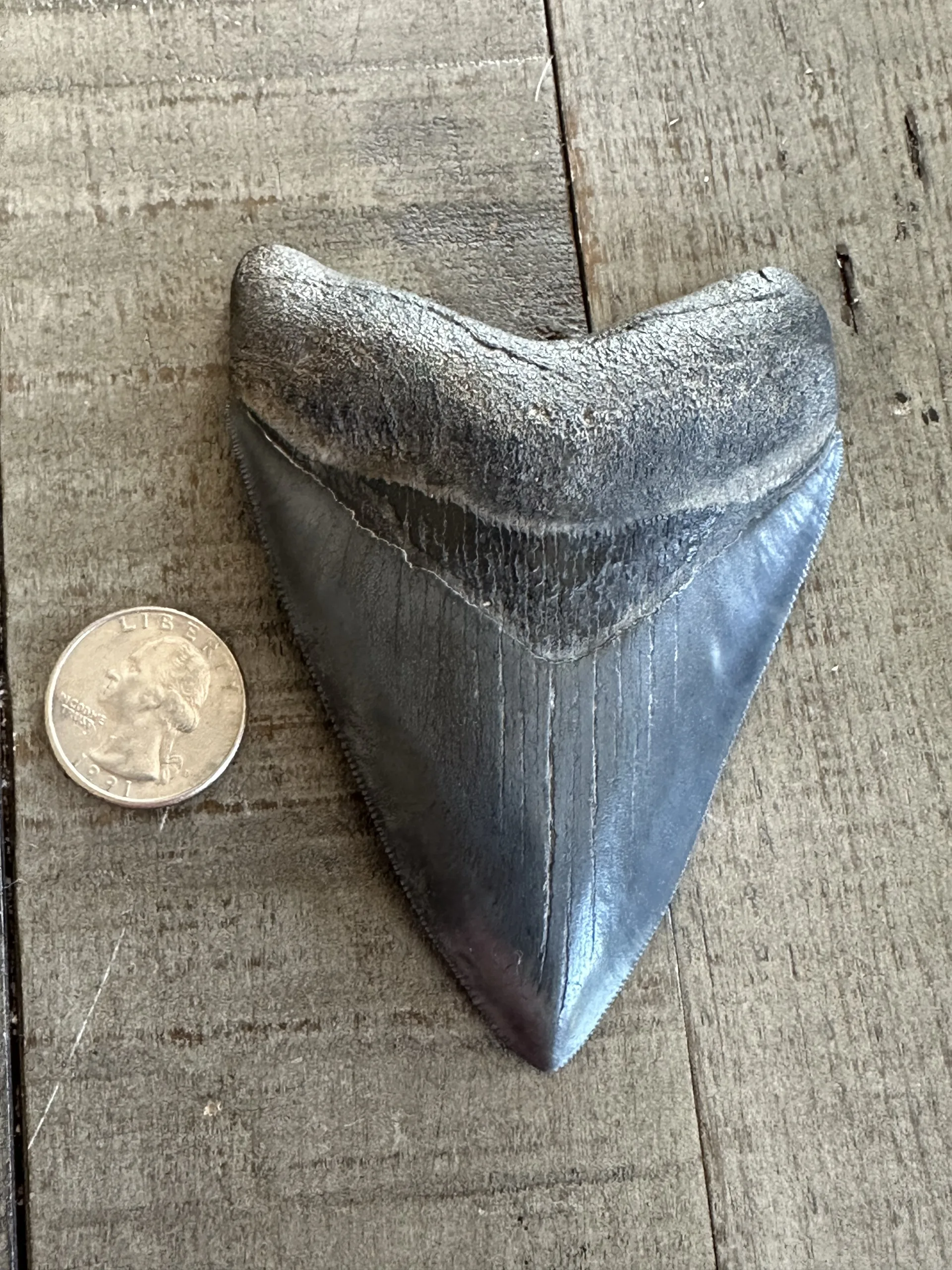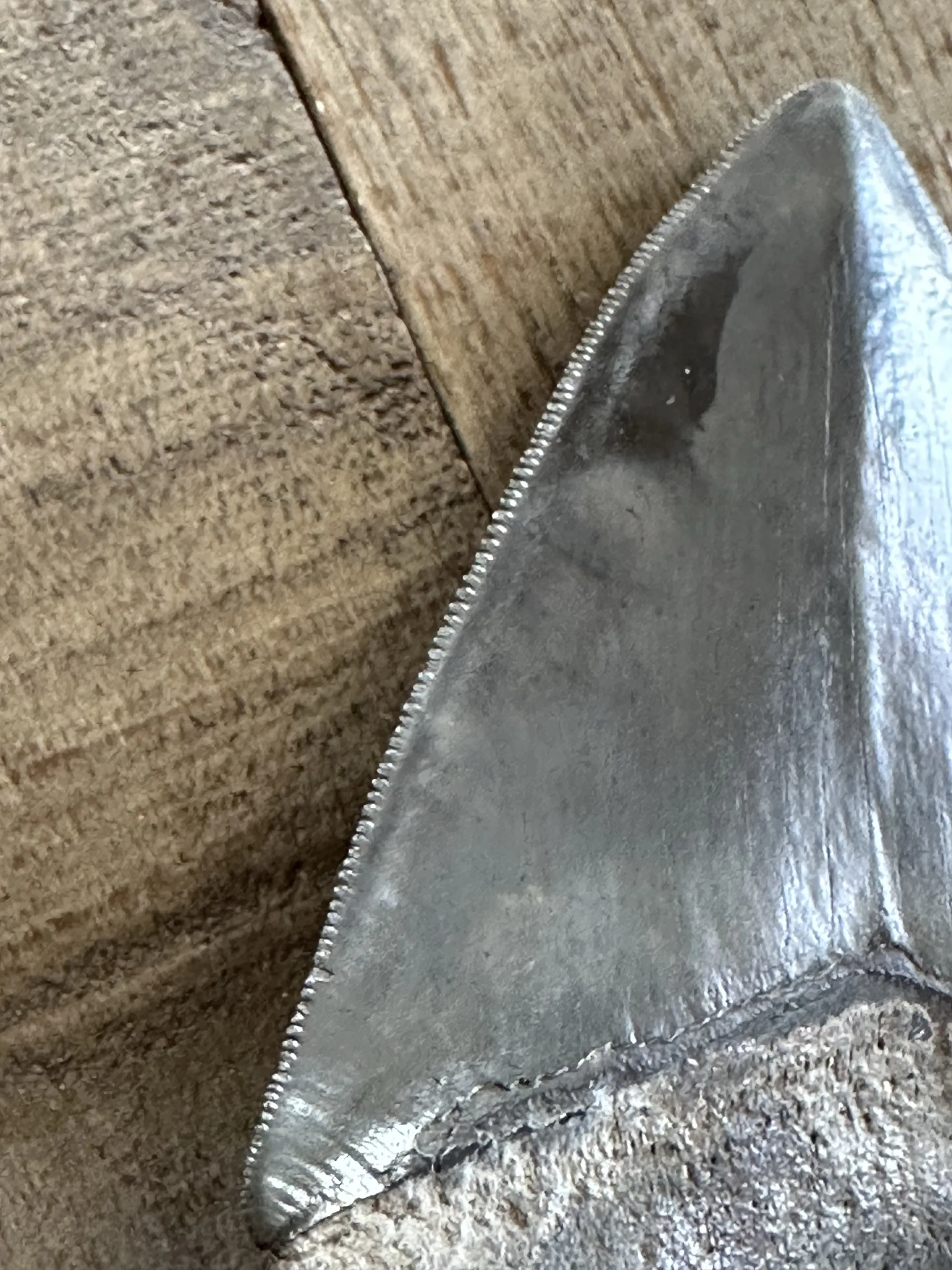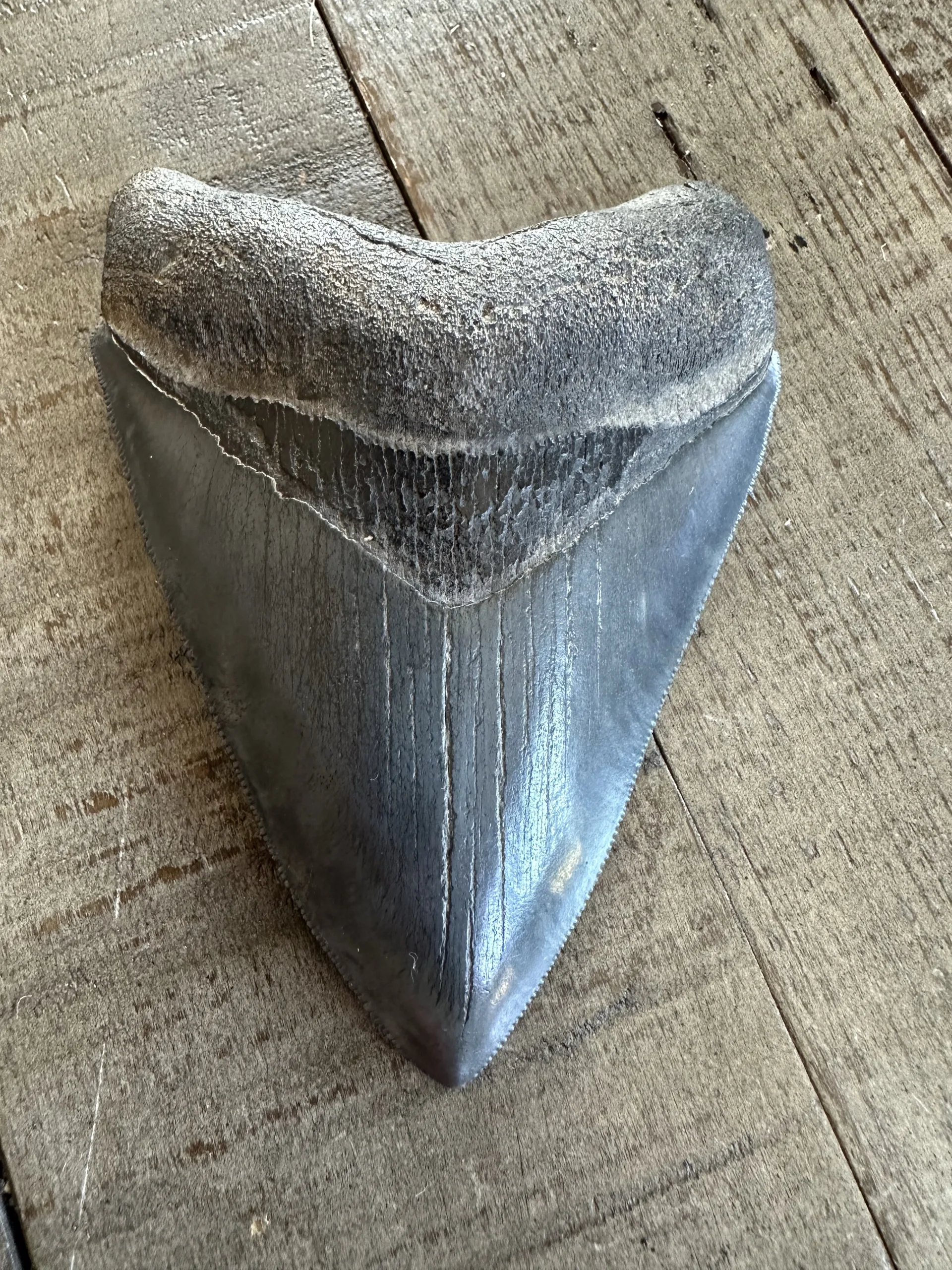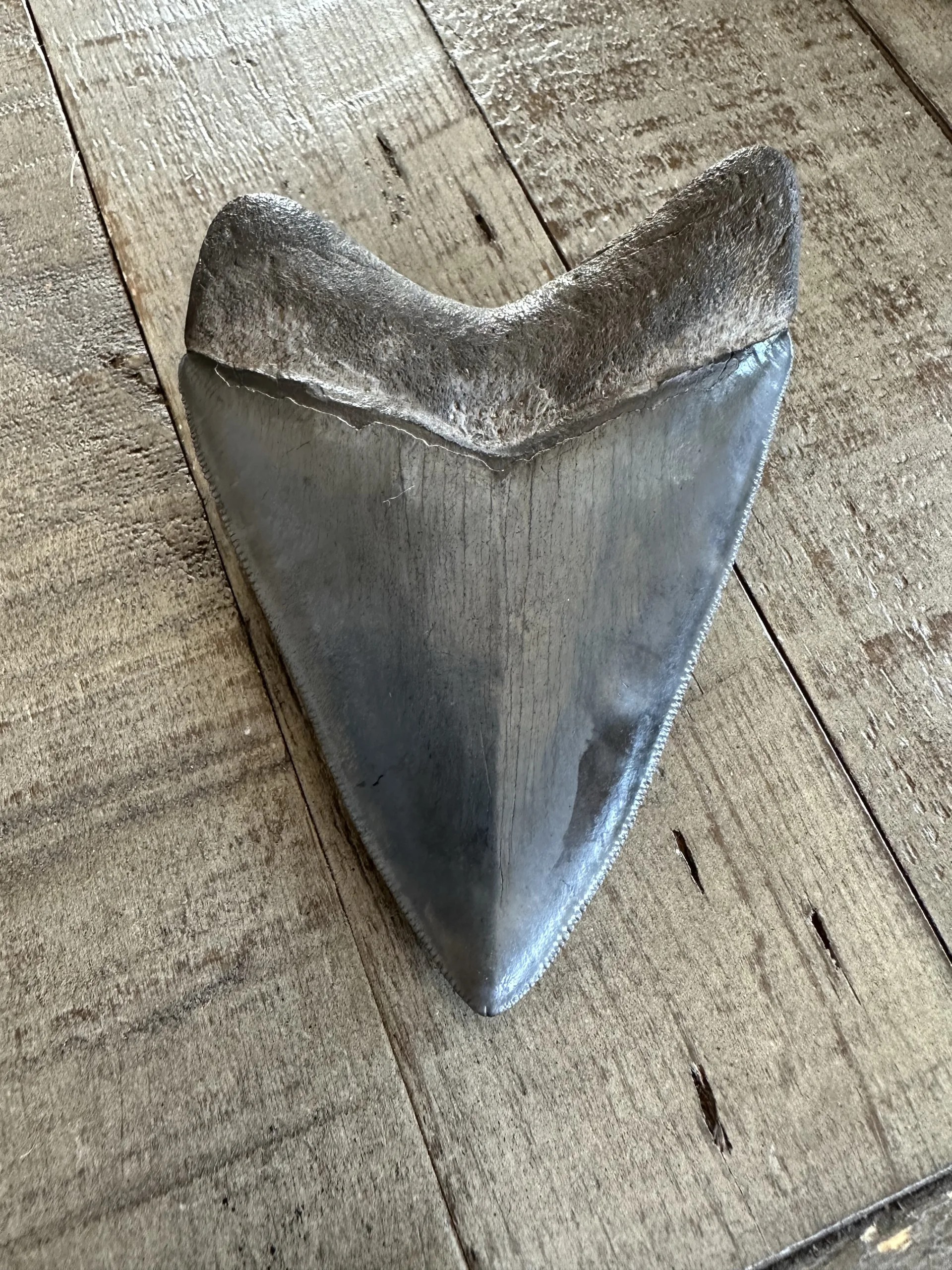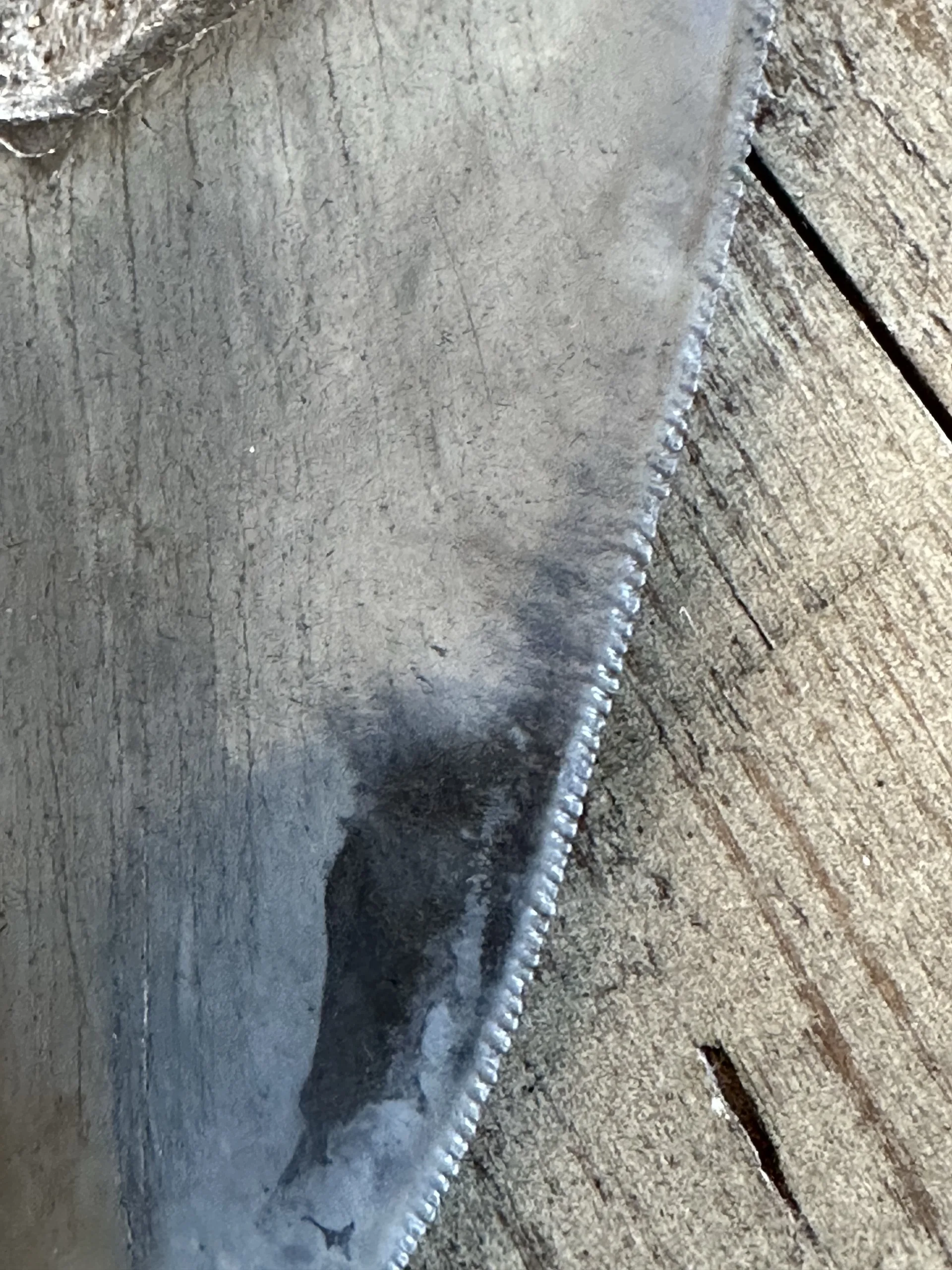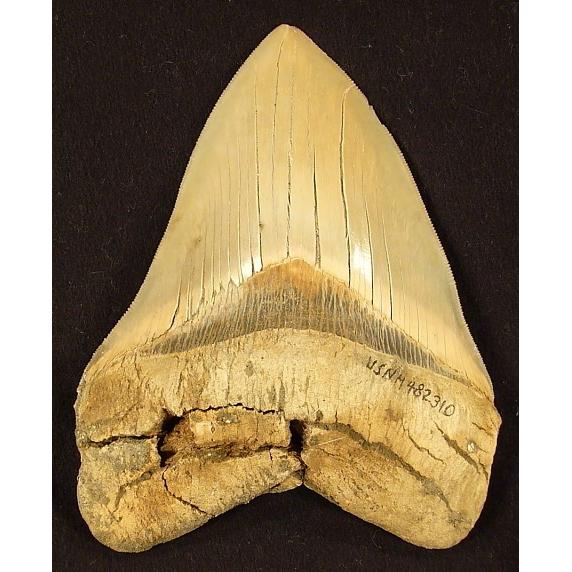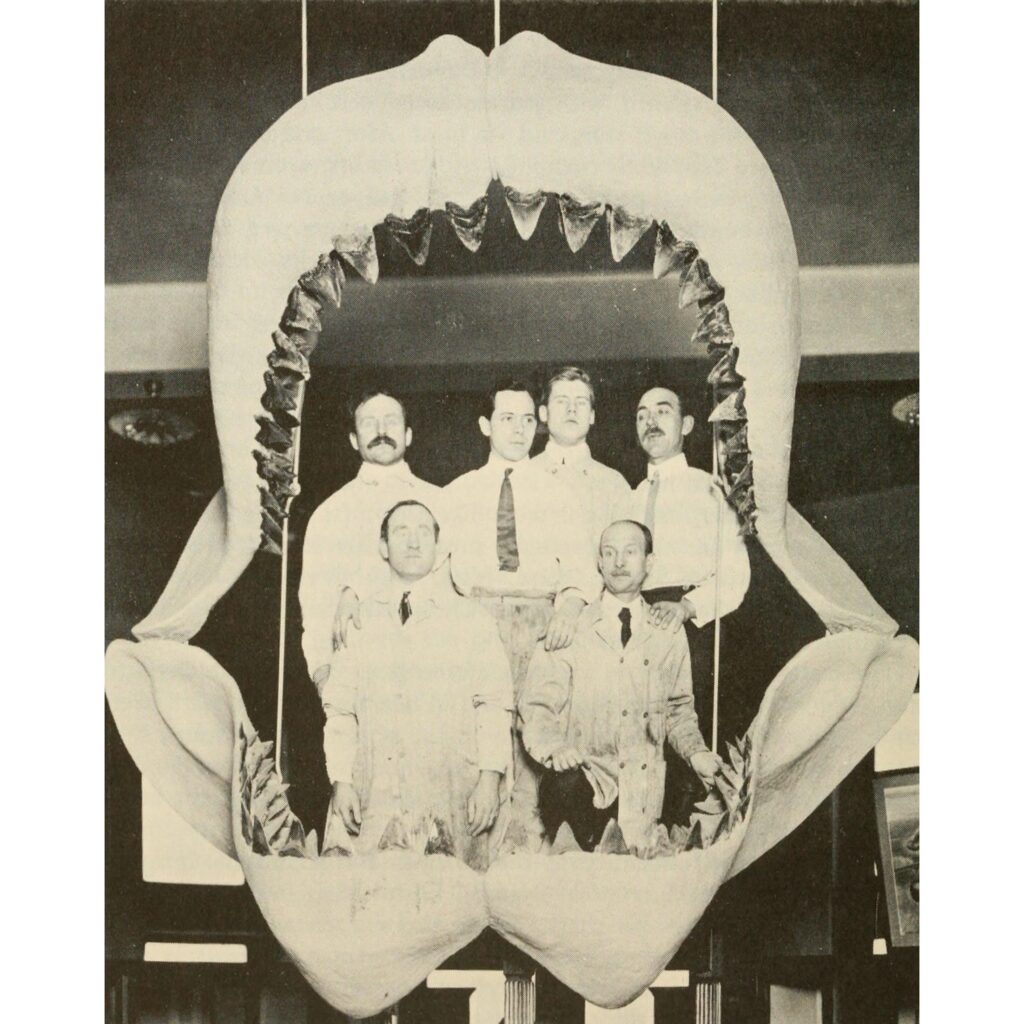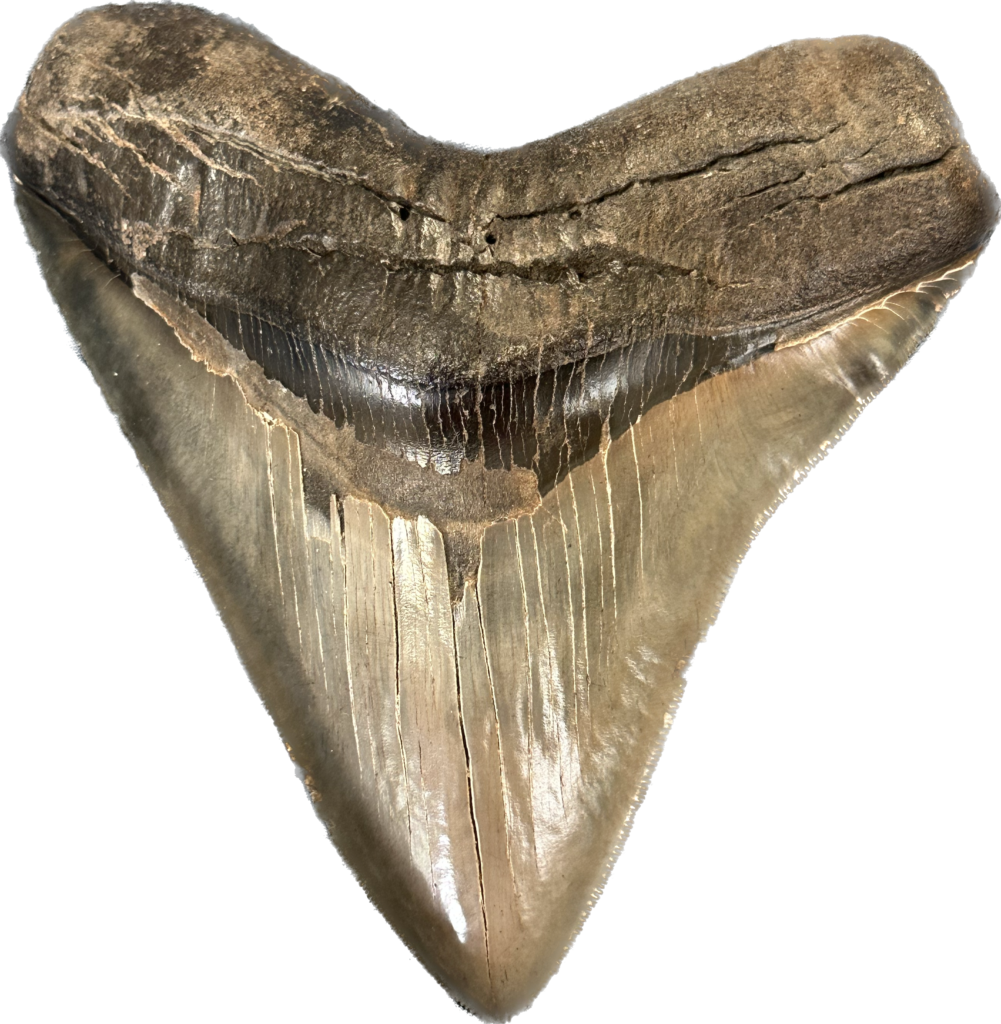A 4.20-inch Megalodon shark tooth from the depths of the St. Marys River in Georgia is an extraordinary discovery, boasting remarkable serrations and a striking dark grey hue. Its substantial length and pristine condition make it a coveted specimen among fossil enthusiasts and researchers. Its dark grey coloration and formidable serrations further accentuate the awe-inspiring nature of this magnificent creature.
Megalodon was an ancient shark that may have been 40 feet (12 m) long or even more. (There are a few scientists who estimate that it could have been up to 50 or 100 feet (15.5 or 31 m) long!) This is at least two or three times as long as the Great White Shark, but this is only an estimate made from many fossilized teeth and a few fossilized vertebrae that have been found. These giant teeth are the size of a person’s hand! No other parts of this ancient shark have been found, so we can only guess what it looked like. Since Megalodon’s teeth are very similar to the teeth of the Great White Shark (but bigger and thicker), it is thought that Megalodon may have looked like a huge, streamlined version of the Great White Shark.

Shark fossils are extremely rare because sharks have no bones, only cartilage, which does not fossilize well. Their teeth, however, are very hard. Their teeth are made of a bone-like material coated with hard enamel and they fossilize very well. Megalodon teeth are similar to those of the Great White Shark, but are much bigger, thicker, and with finer serrations. Megalodon’s jaws could open 6 feet (1.8 m) wide and 7 feet (2.1 m) high. The jaws were loosely attached by ligaments and muscles to the skull, opening extremely wide in order to swallow enormous objects. It could easily swallow a large Great White Shark whole!
Like most sharks, Megalodon’s teeth were probably located in rows which rotated into use as they were needed. Most sharks have about 3-5 rows of teeth at any time. The front set does most of the work. The first two rows are used for obtaining prey, the other rows rotate into place as they are needed. As teeth are lost, broken, or worn down, they are replaced by new teeth. Megalodon may have had hundreds of teeth at one time. Like most sharks, Megalodon’s teeth were probably located in rows which rotated into use as they were needed. Most sharks have about 3-5 rows of teeth at any time. The front set does most of the work. The first two rows are used for obtaining prey, the other rows rotate into place as they are needed. As teeth are lost, broken, or worn down, they are replaced by new teeth. Megalodon may have had hundreds of teeth at one time.
Megalodon lived from roughly 25 to 1.6 million years ago, during the Miocene and Pliocene epochs. It is now extinct, but the exact time of its extinction is hotly debated. Fossilized Megalodon teeth up to 6.5 inches (17 cm) long have been found in Europe, India, Oceania (the general area around Australia including New Zealand, New Caledonia, etc.), North America, and South America. Carcharodon megalodon was named by Agassiz in 1843.

All Megalodon sold by Prehistoric are 100% natural, no restoration and no paint! You can buy with the upmost certainty of the authenticity. South Georgia teeth are extremely difficult to find. The quality of S. Georgia teeth are unparalleled. Serrations are very prominent and teeth are mostly near perfect or better.
Prehistoric 101 (Learn about fossils, minerals, and meteorites)
Learn about Megalodon Sharks
Megalodon Sharks of the World
The Megalodon: Smithsonian Institution

